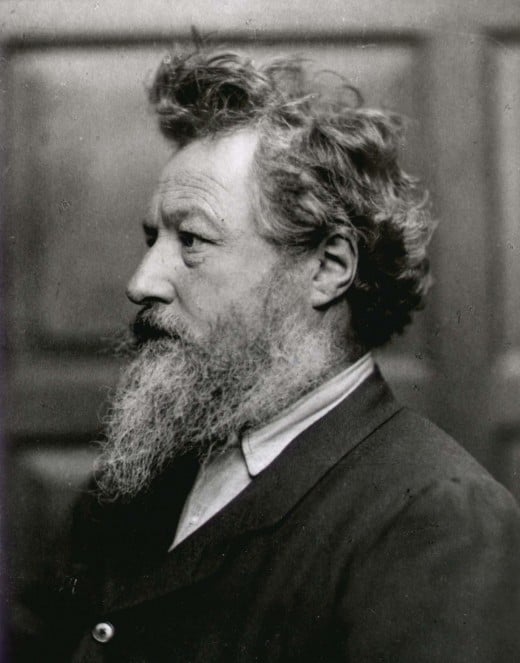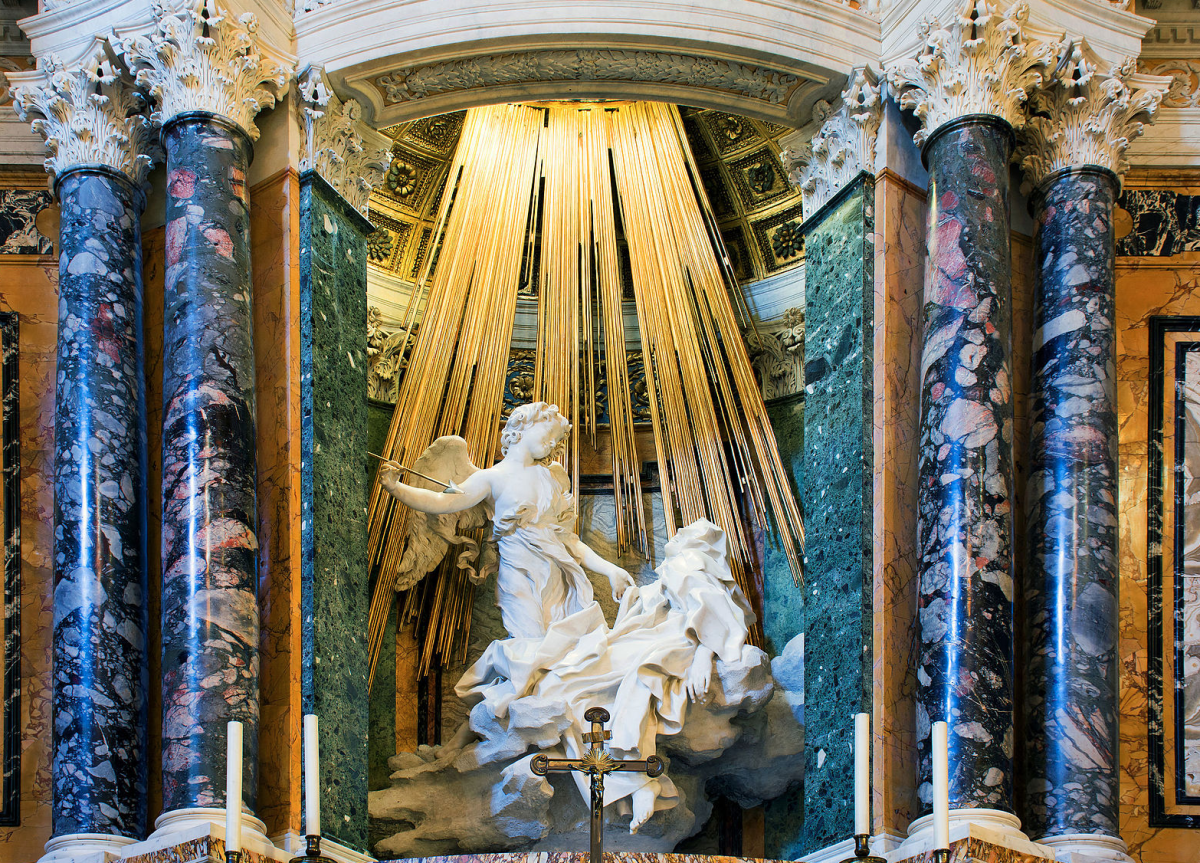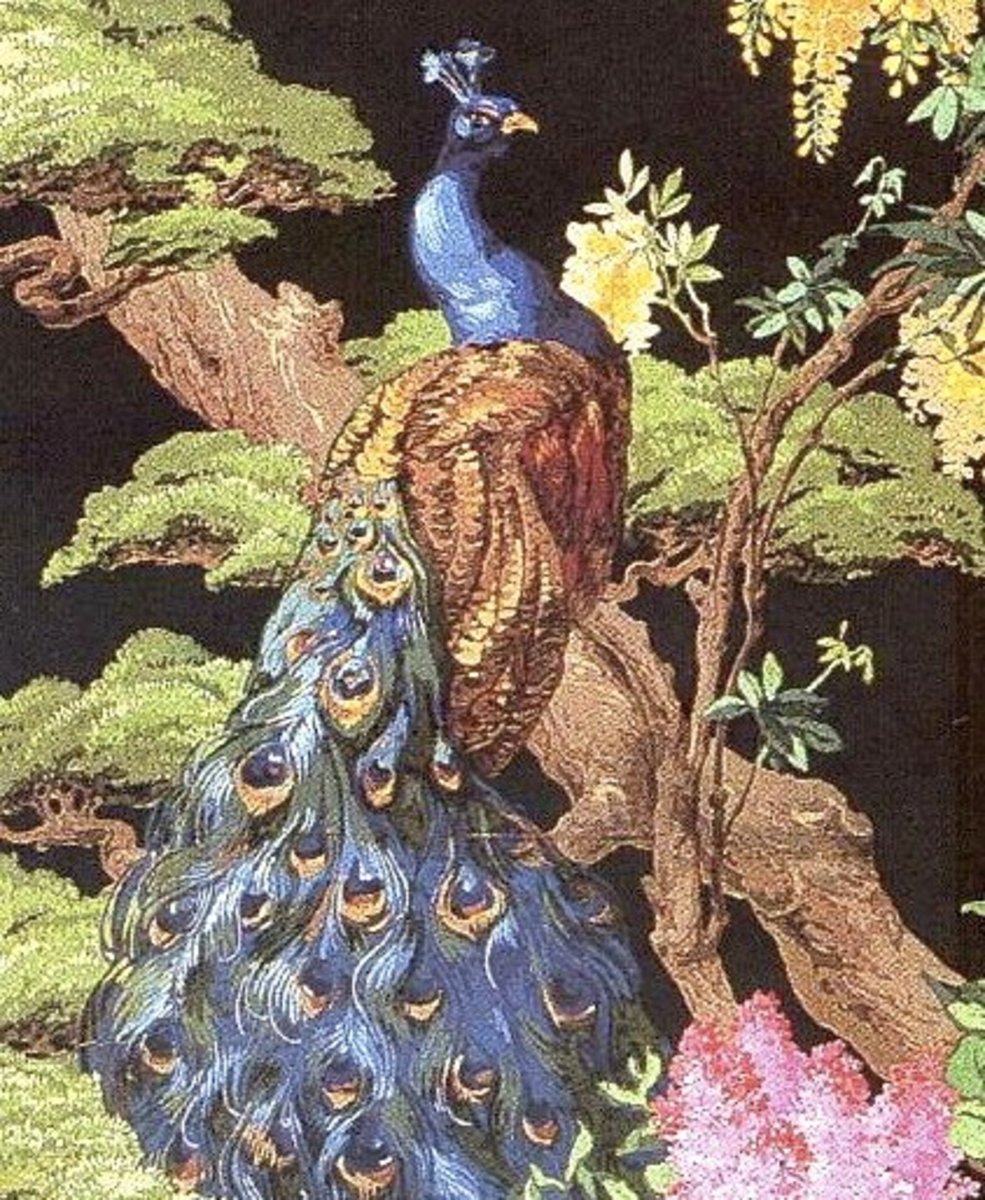- HubPages»
- Home and Garden»
- Home Decorating»
- Interior Design & Decor
William Morris
William Morris Backstory
William Morris (1843–1896) was nothing if not a passionate man whose love of nature, art, and Medievalism were to lead him alternately down different paths that would intersect and the diverge again. He left a trail of achievements, like bread crumbs, for each of his interests; designer of furniture, stained glass, tapestries, wallpaper & chintzes, typography, weavings, poems, novels, magazines that supported his fervent belief in Socialism and he laid the groundwork as a preservationist. In fact, when he died at age sixty-two, his attending doctor declared, “simply being William Morris, and having done more work than most ten men.” was the cause.
He was born the third child and eldest son to affluent upper middle-class parents in London. His love of words began early and by the time he was four its said that he had read most of the Waverley novels. This studiousness produced a delicate composition that was not improved until his family moved to the country when he was six. It was out riding and playing that William developed the robust and vigorous physique for which he is known. It was also here that he first fell in love with nature which would become a recurrent theme in his life and work.
He attended various schools but it wasn’t until 1853 when he entered Exeter college in Oxford and met the artist Edward Burne-Jones (1833–1898) that his life began to take on the shape that we are familiar with today. Burne-Jones would become a life-long friend and collaborator. Together they studied theology, medieval poetry, art and ecclesiastical history and called themselves the “Brotherhood” though historians would remember them as the “Pembroke set.”
Have nothing in your home that you do not know to be useful, or believe to be beautiful.
-William Morris
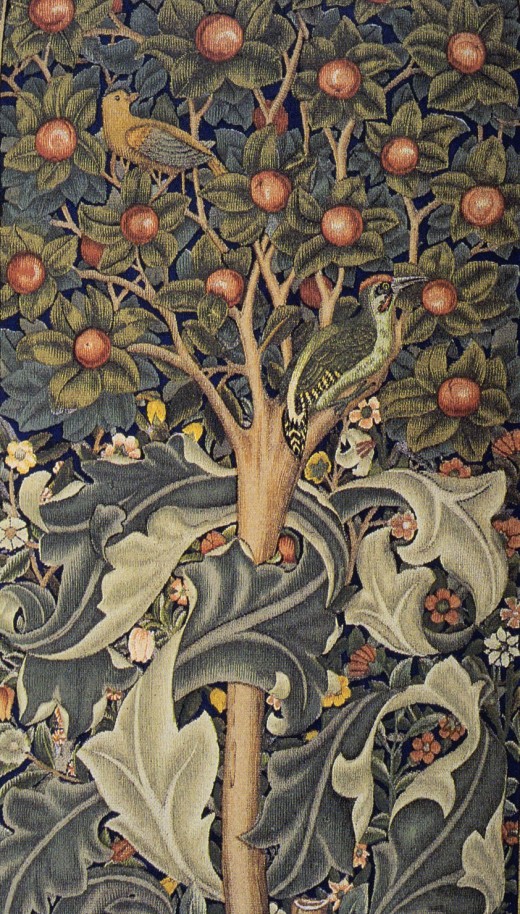
The two were fascinated with the art (evident in Morris’s use of saturated color which was contrary to the fashion of the era) and philosophy of the Pre-Raphaelites . In 1855, Morris came into his inheritance which he celebrated by taking a walking tour of the Gothic Cathedrals of Northern France with Burne Jones. The two were so overcome they decided to pursue art as a career instead of a life in the church which is what was originally planned.
A year later, Morris went to work for the architectural office of G.E. Street where he met Philip Webb (1831–1915) who would become another lifelong friend and collaborator.
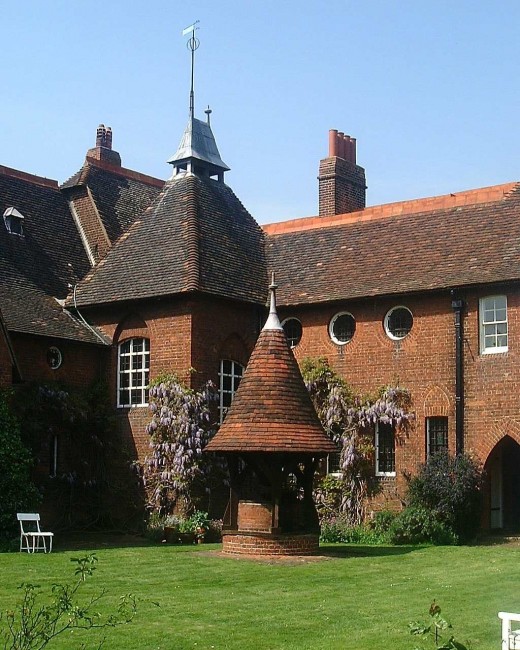
The Red House
The Red House was built to be a “Palace of Art,” a place where William Morris and his talented friends could create and display their work. Unfortunately, because of financial problems Morris was forced to choose between work and his beloved home and after only living there for five years the Morris family moved out.
Elements of Style
✦Color: Vivid, rich colors such as deep blues, teals, greens and reds.
✦Wood: Preferably oak chosen for its natural beauty and texture
✦Furniture: Usually made of wood, sometimes combined with leather
or rush. Often joints were exposed to show workmanship
✦Ornamentation: Simple embellishments were used such as upside-down
hearts, leaves and fans (which were inspired from Orientalism.
✦Wainscoting: High woods panels would adorn walls in simple and
masculine arrangements. Usually, the wood would be left natural but
sometimes also painted deep blue or green.
✦Wallpaper & Textiles: found their inspiration in nature and were
intricately detailed and beautifully rendered in deep colors.
✦Ceramic Tiles: Would employ similar patterns and colors as textiles
and wallpapers however they were usually simplified to accommodate
the medium.
✦Stained Glass: Most Arts and Crafts homes have at least some
stained glass, a medieval detail made modern.
Sparks of Socialism
Around this time he read John Ruskin’s (1819–1900) poem “The Nature of Gothic” which was to have a profound effect on his artistic and socialist beliefs. It caused him to reject the industrial manufacture of furniture and decorative arts as inferior in favor of hand-made objects which he believed should be accessible to all regardless of stature in society, or affluence. His philosophy was most aptly stated by himself, “first, diligent study of Nature and secondly, study of the the work of the ages of Art.”
He was referring specifically to the middle ages and Gothic art, which was a time when craftsmen worked together according to their abilities to fulfill a common purpose; to glorify God. He believed the medieval crafts guilds were akin to a kind of socialist brotherhood and strove to replicate their cooperative in his times. He felt this would not only improve the quality of life for those involved (the artists) and those who profited (the consumers) but ultimately be seen as a force for good in society.
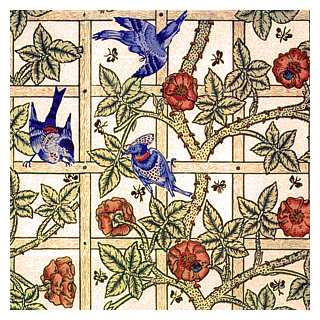
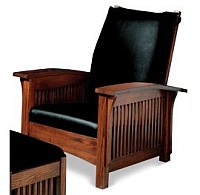
While still a young man Morris met William Michael Rossetti (1829–1919), who was a follower of Ruskin and one of the founding members of the Pre-Raphaelites which by this time had broken into two groups; one who believed in realism and a second, led by Rossetti that believed in medievalism.
The Father of Modern Interior Design
In 1859 Morris, in collaboration with Philip Webb designed and built the Red House for himself and his new wife Jane. Already familiar with architecture, this sparked an intense interest in the decorative arts. He was most interested in combining the exterior and interiors as a cohesive whole, making him the father of modern interior design.
Morris integrated the gardens in his designs giving birth to the idea of “outside rooms” and naturally he brought nature into the home with murals, textiles and other art so that there was a smooth flow from the inside of the house to the exterior. In 1861 he and Burne-Jones, Dante Garielle Rosseti, (1828–1882) Ford Madox Ford (1873–1939) and Philip Webb all formed the company Morris, Marshall, Faulkner & Co which later became known as Morris & Co. Right off the bat, some of their most important commissions came from the church. Gradually they began to branch out into non-ecclesial commissions. However it wasn’t until 1865, after buzz was generated at the Great Exhibition, that they started to turn a profit. Just two decades later Morris was world renowned for his designs in original furniture, pottery, stained glass, wallpapers and fabrics.
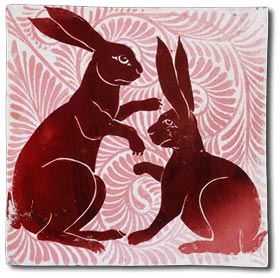
The Irony of Idealism
What sets William Morris apart from other artistic geniuses in history is not his poly-talent but that through his art he was able to embody his beliefs in socialism. He didn’t just proclaim that all people were equal, he lived it. Even his choice of wife, Jane was a poor girl from the countryside with no name or social standing who William met when she modeled for a friend of his, evidenced his beliefs.
While the industrial revolution brought furniture to the masses, for William it wasn’t good enough. He felt people deserved better that the shoddy workmanship accomplished by machines and set out to rectify the problem. He, then as now, enflamed and inspired others to strive for quality and e-quality.
The irony is unfortunately, that quality comes at a price and the utopian world that Morris envisioned is only available to a select few – those that have the means to pay for it. I think its sad that a man who was able to achieve so much – “more than most ten” was not able to realize his ultimate dream.
